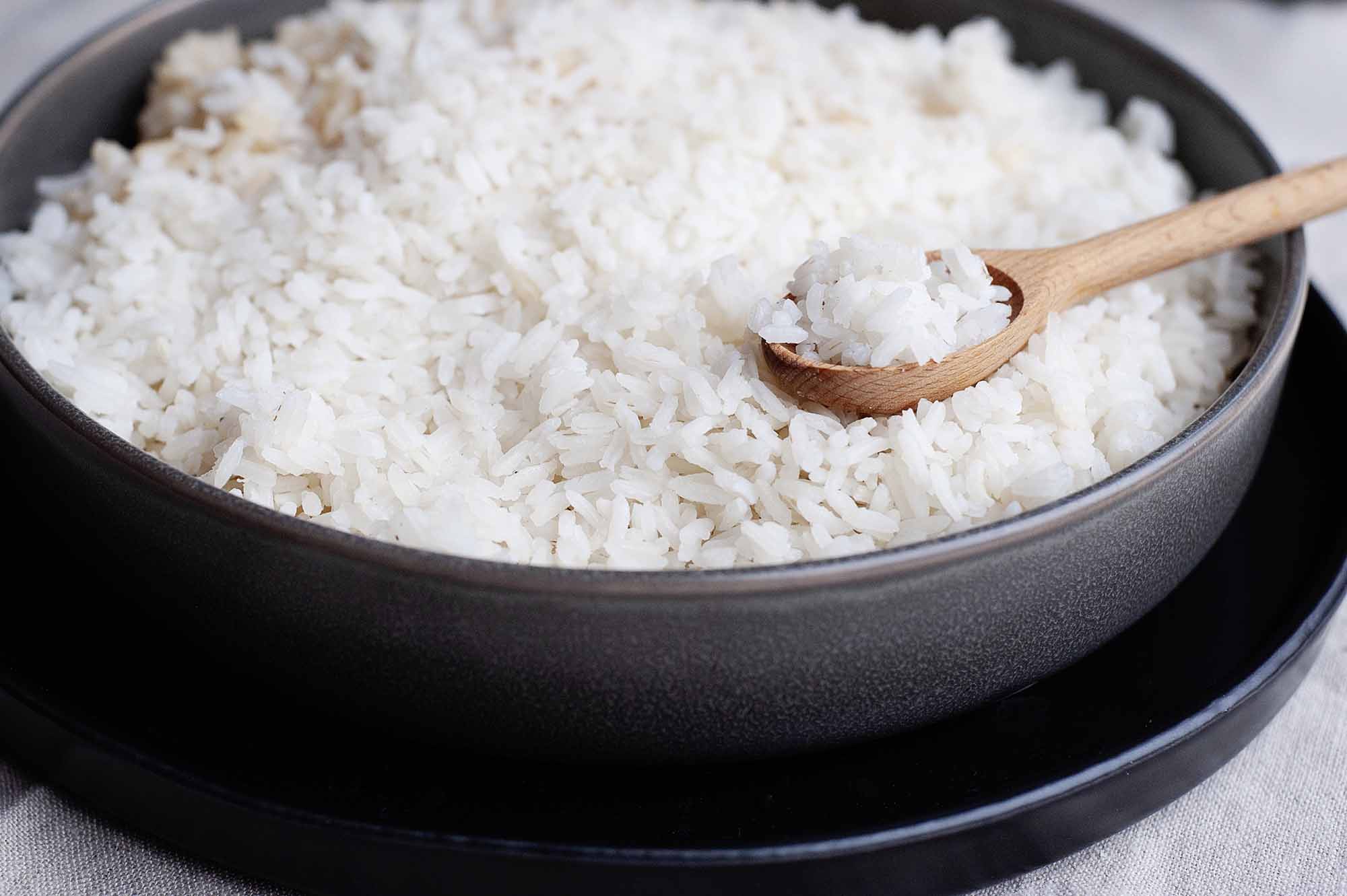Marketing a rice and rice products business can be a daunting task for new entrepreneurs. But with consumer demand on the rise, marketing skills are becoming increasingly important for rice and rice products business owners and managers.
As a business owner, it’s imperative to understand that your financial metrics are inextricably linked to your marketing capacity. Your marketing strategy is the most important aspect of your operation, particularly in an oversupplied market like rice and rice products. In fact, numerous business gurus credit marketing and advertising as the primary factors contributing to business success.
Effectively marketing your rice and rice products business is about more than simply advertising on television or radio or in the newspaper. Successful marketing emphasizes a comprehensive, integrated approach to marketing that incorporates many different marketing communications channels and strategies to reach your target audiences. Whether you are selling rice cakes or cutlets, marketing must be at the core of your business’s operational success.
The goal of any marketing campaign for rice and rice products business owners is to reach customers in their targeted market segments or niche, generate an interest in your product or service and eventually convert customers into paying patrons.
In this brief guide, we will explain how to develop a cohesive marketing strategy that will help increase profits in your rice and rice products business. We will also offer key marketing tips and advice for all types of rice and rice products business owners and managers. You will have to read on to find out about the important elements that form effective rice and rice products marketing strategy.
Rice And Rice Products Marketing And Commercialization Strategy
While there are numerous aspects to consider, your marketing and commercialization strategy will ultimately be built around identifying and strengthening your differentiators from other rice and rice products businesses. The strategy will take into account your product quality, pricing, distribution, reputation, marketing communications, value proposition and many other factors to help the market differentiate your rice and rice products business.
Fundamental to your marketing strategy will be to create an “angle” for your rice and rice products business. For example, you may want to claim that your instant rice is “the world’s healthiest instant rice.” Or that your line of wontons will be the best wontons in the world. You must create a promotional strategy that is unique and meaningful to your ideal audiences.
Another basic principle of the marketing strategy is to direct your promotional resources to the most effective outlets for your rice business. Which publications, websites, social media websites, blogs, Yahoo! groups, and other media are best qualified to reach your customers? The most efficient approach is to identify the top few outlets for your products and develop these media into powerful marketing channels to push your rice business.
You must also consider about your target markets, your competitors’ marketing strengths, and your own marketing strengths. This will help you identify marketing methods and tactics and make better marketing decisions.
The whole marketing process relies on the communication of a unique and relevant message that can be differentiated from the communications of other companies. The approach that you should take for your rice and rice products business is to develop a marketing strategy that can be precisely and easily communicated to your target audiences. You should be able to convey your message in no more than 175 words.
Differentiate Your Rice Business Strategy
The key to every marketing strategy is differentiation. Your rice business must have a competitive advantage that allows it to stand out from the crowded sea of competitors in your industry. There are many ways you can differentiate your rice business.
For example, if your rice business is only one of a few rice businesses catering to the growing health food market, you can emphasize the health benefits of your products. Or if you are marketing organic or fair trade rice products, you can emphasize the socially conscious nature of your rice business.
You may have to spend a lot of time and effort (and money) to effectively differentiate your rice business from your competitors. Identify all of your differentiators and distribute them in your marketing communications consistently throughout the different marketing mediums you are employing.
Marketing communications can include virtually any form of communication to a targeted audience that you are trying to sell something to or position yourself relative to your competition. Marketing communications include television, radio, print ads, direct mail, email blasts, billboards, paid search, banner ads, display ads, online videos, web pages, and presentations. Depending on your marketing strategy, you may choose to advertise in multiple media. This can be an effective and low cost method of advertising. But it will take some diligent measuring of the various mediums you have employed to determine which strategies are the most effective and which may have a negative effect on your rice business.
Without understanding some basic marketing terminology, your marketing strategy will be useless to you, regardless of how creative and effective your business plan may be. Some of the most basic marketing definitions that you must understand are the stages of the marketing mix:
A marketing mix is a tool that is used by businesses to organize and prioritize the elements of their marketing strategy. These processes are the marketing activities that define a business entity irrespective of its scale. A business may be small, medium or large, but the marketing mix will remain the same.
These are the components of the marketing mix:
- Product
- Price
- Place
- Promotion
The market mix also includes target market analysis, product development, product positioning, and distribution analysis as well. Market mix is composed of all the activities you must undertake to develop, produce, promote and distribute your products.
The most important thing you need to understand is that to create a successful marketing mix strategy, you must be able to characterize your target market and position your particular product or service to appeal to your target market.
- Product
- Quality Price
- Distribution Place
- Promotion
Strong product differentiation is essential for your marketing strategy and business success.You must be able to differentiate your rice and rice products business from the many competitors in your niche area and come up with a marketing strategy that is unique and innovative.
One method of achieving product differentiation is through new product development or line extension. As you establish your rice business, you may want to consider expanding your product line.
The other option is to introduce packaging and labeling variations. For example, Nestle has used the Dreyer’s ice cream brand to market different products, such as frozen beverages, ice cream bars, ice cream sandwiches, ice cream desserts, soy ice creams, soft serve frozen desserts, and sorbets.
The size of the package can also be a tool for product differentiation. For example, the large 64 ounce (1.89 liter) bottles of POM juice stand out in a convenience store cooler among the smaller bottles of fruit juices.
Some other products that companies have packaged to enhance their product differentiation are:
- The Nike shoe
- The Tropicana orange juice container incorporating a “pour spout”, much like a ketchup bottle
- The single serve cereal box
- The Le Creuset cast-iron “Dutch oven”
- The Hot Pockets brand microwavable frozen breakfast sandwiches
Some of the more common methods of product differentiation include:
- Sourcing
- Formulation
- Processing
- Packaging
- Delivery
- Brand extension (also known as brand stretching)
- Customer relationship management (CRM)
- Product line extension
- Product life cycle management
- Product life cycle
The “product” in the marketing mix is the actual good or service you are trying to sell to your target customers. A good product makes the marketing mix work more efficiently.
Almost every business has a product. A product can be an actual good or a service. In some cases, both goods and services can be products. A product can also be considered intangible. An example is a corporate trademark or logo. For example, the Segway people mover or the Swiffer household cleaning products.
A service can also be a product. For example, a haircut or a candy bar. The term product refers to the marketing mix element whether it is good or service.
Formulating an effective strategy for product development and differentiating your rice products can be very important to your business success. For example, the Lays potato chip brand has a wide array of established products as well as “innovative products” that allow it to compete effectively with the Frito-Lay and Ruffles brands.
Differentiated product offerings are important for a number of reasons. If you are competing in a crowded market with many competitors, you may want to cast your net as wide as possible to capture as many potential customers as possible.
Another reason why it is important to differentiate your products from those of your competitors is because a product that is not differentiated enough from its competition has the potential of becoming too commoditized. A lack of differentiation can indicate that a product is “same old, same old” and consumers with have no reason to consider purchasing the product.
With many of the same products on the marketplace, the supplier is in what marketing theorist Theodore Levitt referred to in 1960 as a “marketing conundrum.” In this situation, to sell any product at all, a seller must differentiate his products from his competitors’ products.
Differentiating Your Rice Business
Rice must be differentiated by variety.
Marketing Strategy for Rice Manufacturers
There are a number of effective ways that you can differentiate your rice products to appeal to your target market. One of the best ways to differentiate your rice products is through packaging. Packaging provides an opportunity to highlight the benefits of your rice products and demonstrate the social responsibility of your packaging materials. For example, as consumers become more health conscious, food-and-beverage companies have been responding with more nutritious foods. New products are appearing on grocery store shelves that provide high nutritional value and health benefits. One example is “smart snacks.” These are snacks that can be eaten in small amounts to control hunger, but are low in calories. An example of this is the new Lay’s “Light” potato chip strain from the consumer giant, PepsiCo. These less-calorie chips are being sold in small, individual serving bags. The small bags are great for people who may be watching their weight or who are concerned about their overall health and nutrition.
Another innovative packaging strategy is environmentally-friendly packaging. Nestle has recently introduced its new Nespresso coffee capsules. These capsules are made from recycled cellulose that is 100% recyclable. Working in partnership with a Swiss company, Nestle has developed a system that allows the capsules to be collected and recycled. The capsules are a substitute for the traditional metal coffee can. Coffee is grown, bought and sold using these combustible cans. This process can contaminate forests, creates mountains of waste, pollutes the air and is costly. The advantage of these capsules is that they make the process of recycling much easier and much more efficient.
Even though your products may not be completely new and unique, there may be changes in the way your rice is produced, formulated, processed, and packaged that allow you to call attention to certain facts about your product or service. You must be able to promote your unique product or service and emphasize those features that make your product more useful or beneficial than your competitors’ products.
If your product does not have special features, then you have to develop a way to communicate your product value proposition. Offer a product line extension or a line assortment. This should provide enough of a reason to get customers to try your particular product or service.
The more you can market your rice products as a unique product, the better your chances are of selling your produce. If your product or service is one-of-a-kind, then you want to stress those aspects of the product that are unique with respect to your competition.
Also, you can communicate your exceptional product value proposition in a way that links your business with the essence of what the consumer seeks from you.
Some of the information was provided by the great team over at Engineeringness.
















